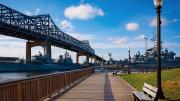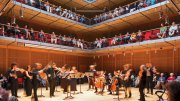The “P” word has long haunted Fall River. “People come to the city, see the Braga Bridge and waterfront, the historic buildings, and say, ‘Hey, this place looks like a mini-San Francisco—this place has so much potential!’” says Patrick Norton, executive director of Narrows Center for the Arts. “And we have been hearing this word ‘potential’ for, let’s see, I’m 59, so, for about 58 years. But I can say, because I grew up here and stayed, that I know Fall River is now moving forward, sort of in spite of itself. We’ve had five or six really bad mayors and, obviously, one guy last year went to jail.”
One cause for optimism is the new South Coast Rail station slated to open downtown later this year, enabling direct public transit from southeastern Massachusetts to Boston for the first time since the 1950s. Other major infrastructure changes are also under way—like the demolition of Route 79 that will open access to 15 re-developable acres along the appealing Taunton River waterfront. “This whole area’s going to explode,” says former city councilor and attorney Dave Dennis, who has been part of the planning effort. “In my opinion, that will be the new downtown, the new center of Fall River.”
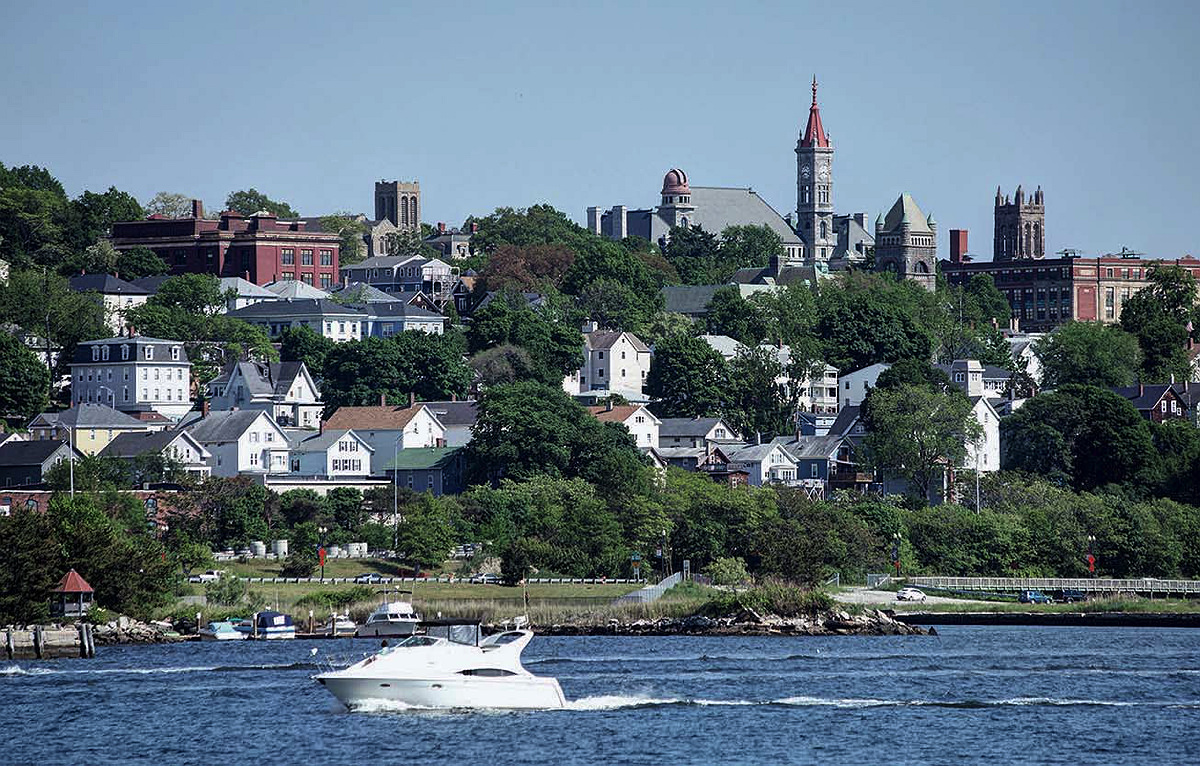
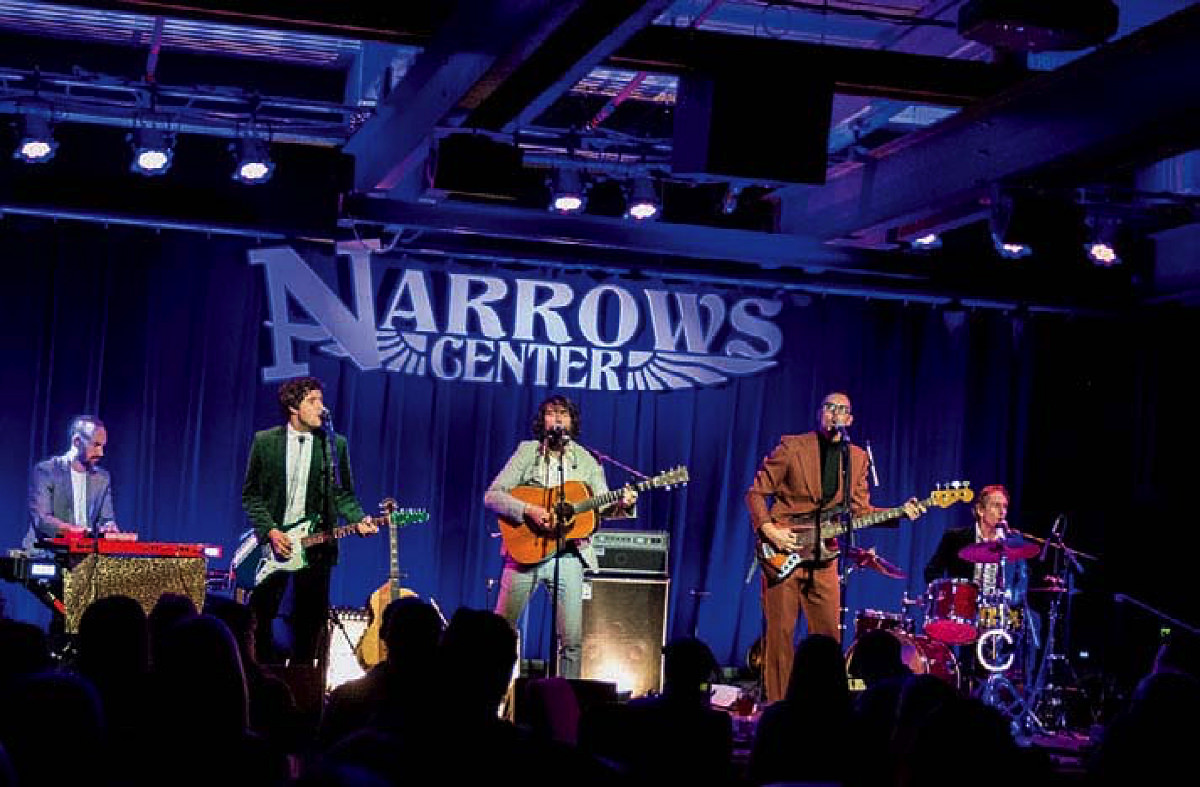
From top: the city, viewed from the Taunton River; the Narrows Center for the ArtsDenisTangneyJr/istock; courtesy of the Narrows Center for the arts
Add to that a percolating arts-and-culture scene—more than 100 artists live or work in the city, with many more working in the region—coalescing around tourism-focused groups like Creative Arts Network (founded by Dennis) and newer organizations like Viva Fall River and the Fall River Arts and Culture Coalition (FRACC). For leaders of this once-thriving textile hub—a place otherwise known for the nineteenth-century Lizzie Borden ax-murders trial, more recent political scandals, and poverty—these promising changes are way overdue. “People in Fall River have been working hard,” says Norton, “and right now, a lot of what we’ve been talking about for about 30 years is finally happening.”
So, what does this city of 94,000 people, poised for a renaissance, offer? From monuments, naval vessels, and Portuguese-American culture to historic house museums and rehabbed mills, Fall River is a patchwork of un-obvious treasures—rewarding precisely because it hasn’t been dolled up for sightseers. “It’s the only city in America whose city hall straddles an interstate highway (I-95),” Viva Fall River’s executive director Patti Rego says. “I don’t know why they did that, but it’s ours, and ours alone. There’s a real authenticity here. Fall River is a good place to be pleasantly surprised.”
The Waterfront District
A seven-mile stretch along the Taunton River—including a 1.4-mile pedestrian path and recreational grounds—is anchored by the Fall River Heritage State Park and visitor center. The city “is experiencing a cultural awakening,” says the park’s visitor services supervisor and retired lawyer James Lopes ’74, J.D. ’77. “With new scholars investigating the early history of Massachusetts, we are just beginning to appreciate Fall River’s role in” its development. Films, photographs, and exhibits highlight that history—and the city’s namesake: the waterfalls along the Quequechan River that powered textile mills that defined the city for generations. (Pronounced “Quick-a-shan,” the word, used by the indigenous Pokanoket Wampanoag tribe that was once based in what’s now Bristol, R.I., means “falling river.”) Following Samuel Slater’s lead in Pawtucket, R.I., men like Revolutionary War hero Colonel Joseph Durfee experimented with industrialized textile manufacturing that eventually led others to build more than 200 mills, inspiring the designation “Spindle City.”
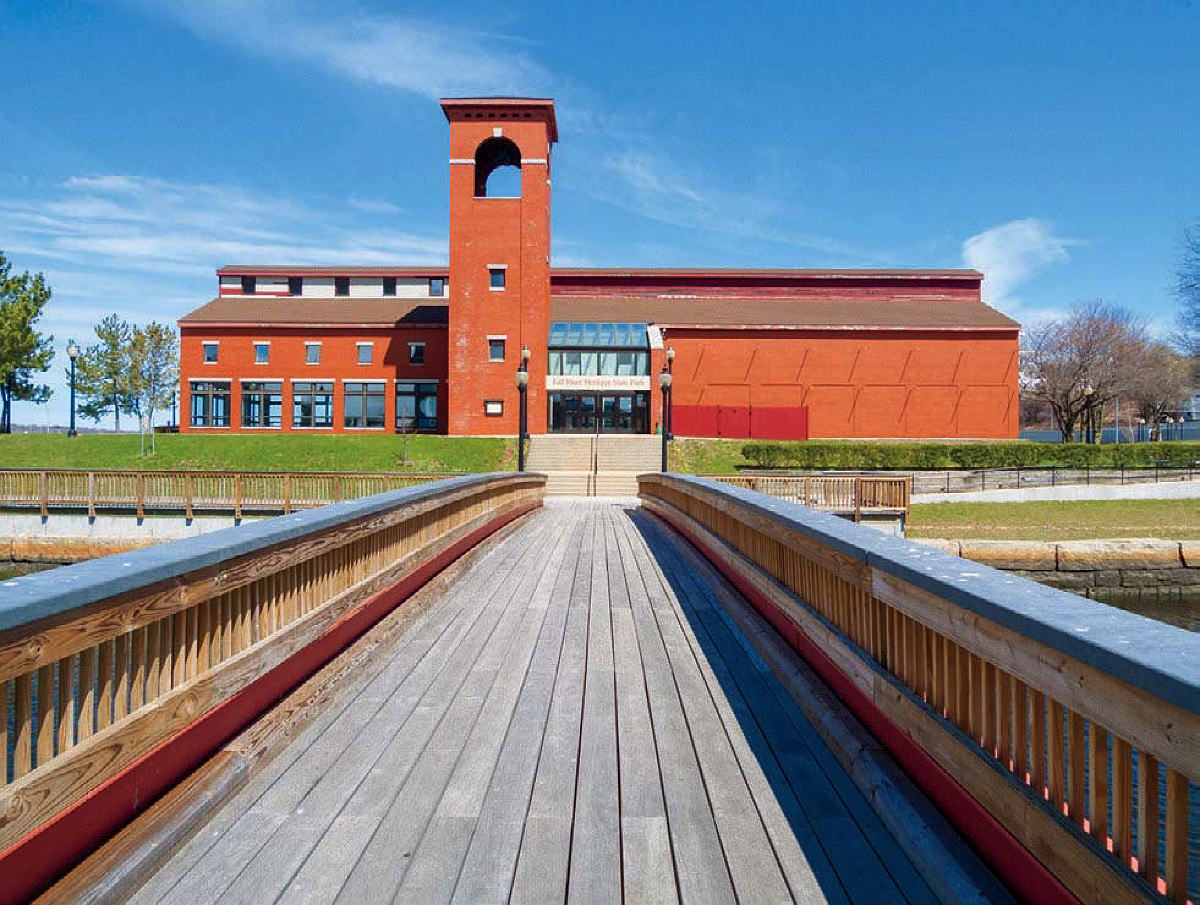
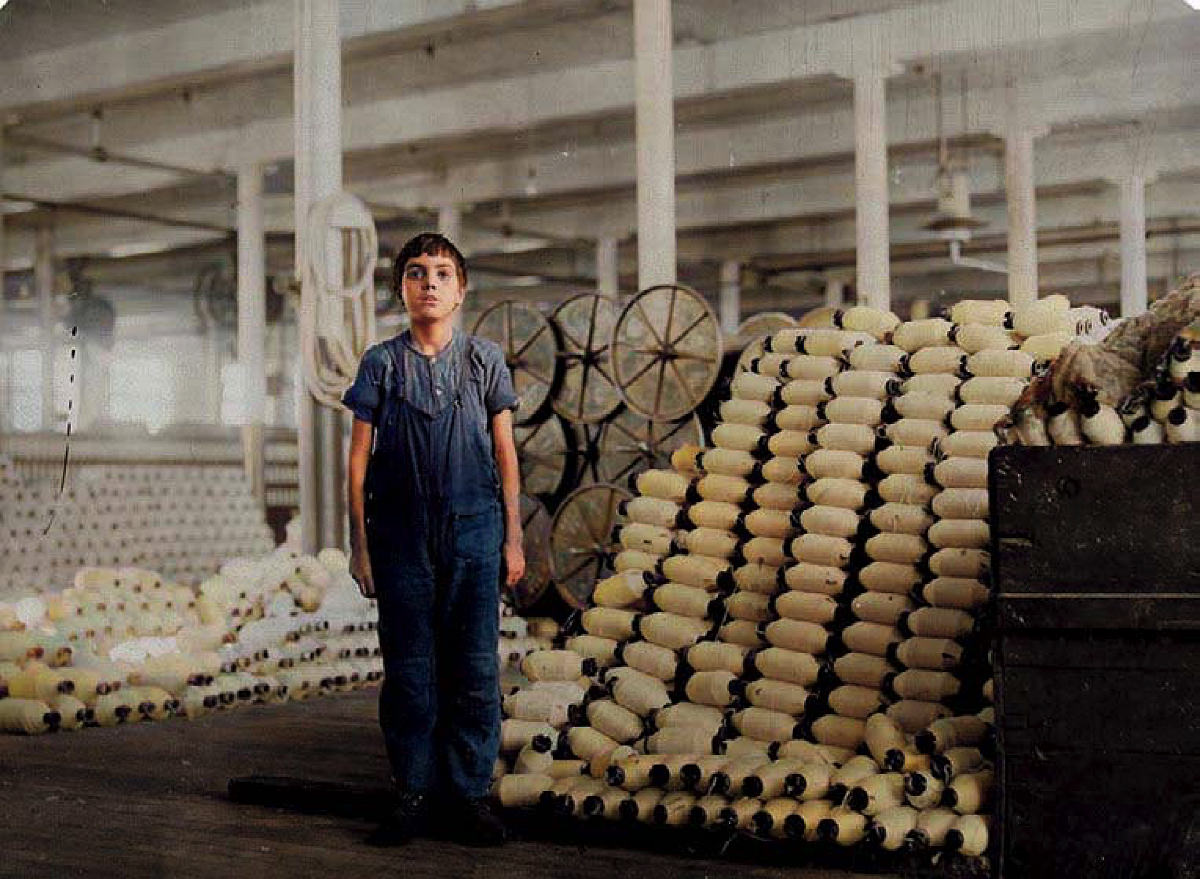
Fall River Heritage State Park vistor center (above) and one of the colorized Lewis Hine images on display insidePhotograph by Kenneth C. Zirkel/Wikipedia; courtesy of Fall River Heritage State Park
At its peak late in the 1800s, Fall River ranked second only to Manchester, England, as a textiles hub. Even in 1910, the city was home to “43 corporations, 222 mills, and 3.8 million spindles, producing two miles of cloth every minute of every working day in the year,” according to Stefani Koorey’s Fall River Revisited. Factories spun thread and wove fabrics, and bleached, printed, and finished them, too, relying on a steady supply of immigrant labor (mostly English, Irish, French Canadian, and Portuguese). Of 105,000 residents at the turn of the century, only 15,000 claimed American parentage. In the visitor center, mounted colorized photographs by Lewis Hines capture life in the factories, and narratives follow the continuing story of immigration. Another exhibit explores the creativity of city native Joe Raposo ’58, the son of Portuguese immigrants who became a prolific composer, songwriter, and pianist best known for the thousands of songs he created for Sesame Street. “There are beautiful, historic sections of Fall River,” says Lopes, “and within walking distance of the park, you’ve got the Narrows center, Battleship Cove, the Maritime Museum, and the Lafayette Durfee House.”
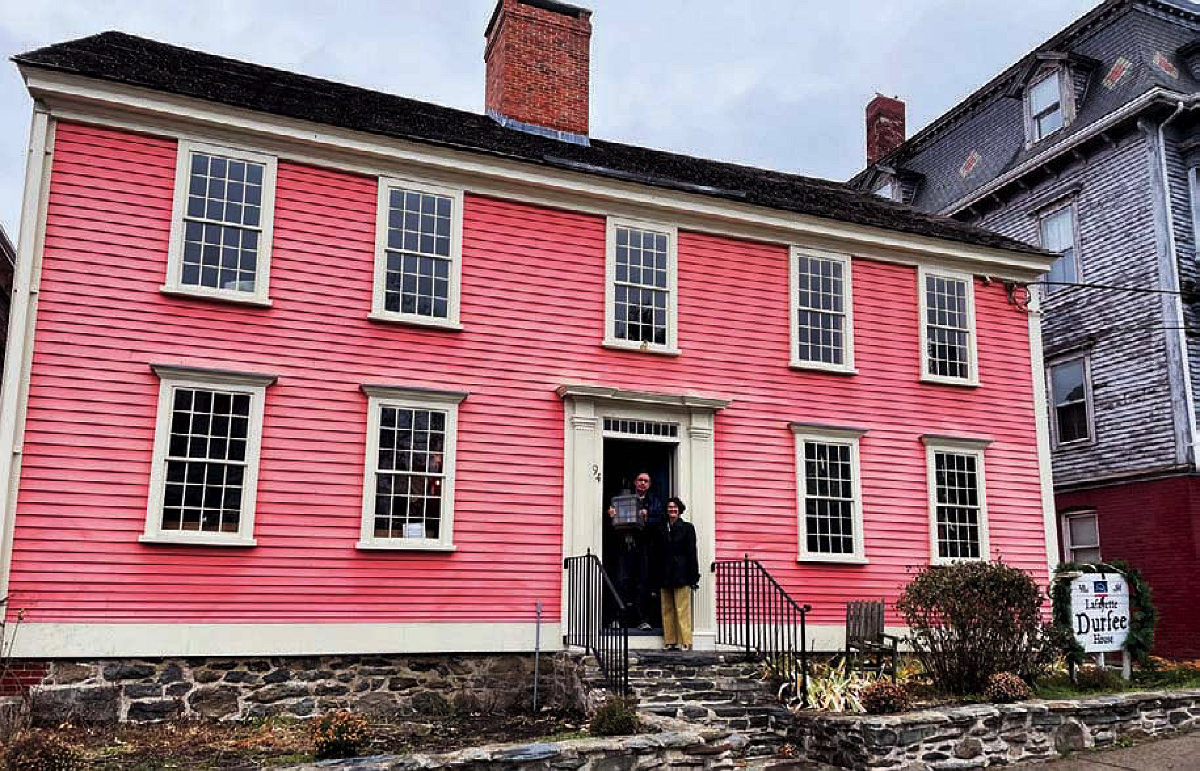
Outside the Lafayette Durfee HousePhotograph by Nell Porter Brown/Harvard Magazine
From the center’s windows, it’s impossible to miss the world’s largest collection of World War II and Vietnam War-era U.S. Navy vessels in Battleship Cove. Tour the USS Massachusetts (built in Quincy and dubbed “Big Mamie”) that entered the war in North Africa in 1942 and went on to battles in the Pacific. Hop onto the deck of the destroyer USS Joseph P. Kennedy Jr., or duck into the depths of the submarine USS Lionfish. The Hiddensee, the world’s only example of a Soviet-style large missile cutter, is a Cold War remnant once used to defend the East German coast. This season features the Memorial Day (May 29) ceremony and 21-gun salute on the USS Massachusetts fantail, an outdoor swing dance where Compaq Big Band plays the greatest 1940s hits (June 3), and a Korean War commemorative gathering with re-enactors. (June 25).
The affiliated Maritime Museum (on land) offers a hodgepodge of memorabilia, artifacts, and scaled renditions (like the world’s largest model of the Titanic) related to the region’s whaling industry, Portuguese migration, and the beloved Fall River Line. This fleet of luxury steamships and a railroad carried passengers overnight—with concerts, dancing, and fine dining—between Boston and New York City from 1847 to 1937. Spearheaded by industrialist Colonel Richard Borden (patriarch of the powerful Borden family), the boats carried up to 1,500 passengers from Narragansett Bay to the Hudson River, docking in Manhattan, with the slogan: “A fine sleep and into New York in time for business in the morning.”
Not far from that, across from the new downtown rail depot, is the 14-acre public space and Senator Norton City Pier constructed for concerts, boating, and community events. North of the pier, the waterfront pedestrian path culminates at Bicentennial Park. The open green with river breezes features war monuments, including the 2021 80-percent-scaled version of the Vietnam Veterans Memorial in Washington, D.C., and a statue modeled on the famous 1945 photograph, “Raising the Flag on Iwo Jima,” commemorating six U.S. Marines atop Mount Suribachi during World War II.
South of the monuments and Braga Bridge, the Portas Da Cidade (City Gates)—replicas of the main gates to Ponte Delgado, São Miguel’s capital city—honor the city’s deep connection to Portuguese heritage. Immigrants from places (Cambodia, Brazil, and Central America) have moved in since the first wave of sailors arrived from the Azores and Cape Verde islands during the era of commercial whaling. But that traditional Portuguese American community endures in Columbia Street’s shops, restaurants, and bakeries, and the annual Day of Portugal celebration (June 8-11). “Some businesses that were founded by Portuguese are in their second and third generation of ownership and are mainstays of the community,” says Michael Benevides, whose own family began selling Portuguese products and food in 1988 out of their three-car garage. “And up until about 10 years ago, 99.9 percent of our customers were Portuguese-speaking.” That business, greatly expanded in a former mill, is now Portugalia Marketplace. The store’s shelves are packed with imported products, like salt cod and cured meats, cheeses, jams, and tinned fish, along with prepared foods—and the business boasts the largest selection of Portuguese wine in the United States. “We were an old-world business,” Benevides notes, “but with a new-world approach.”
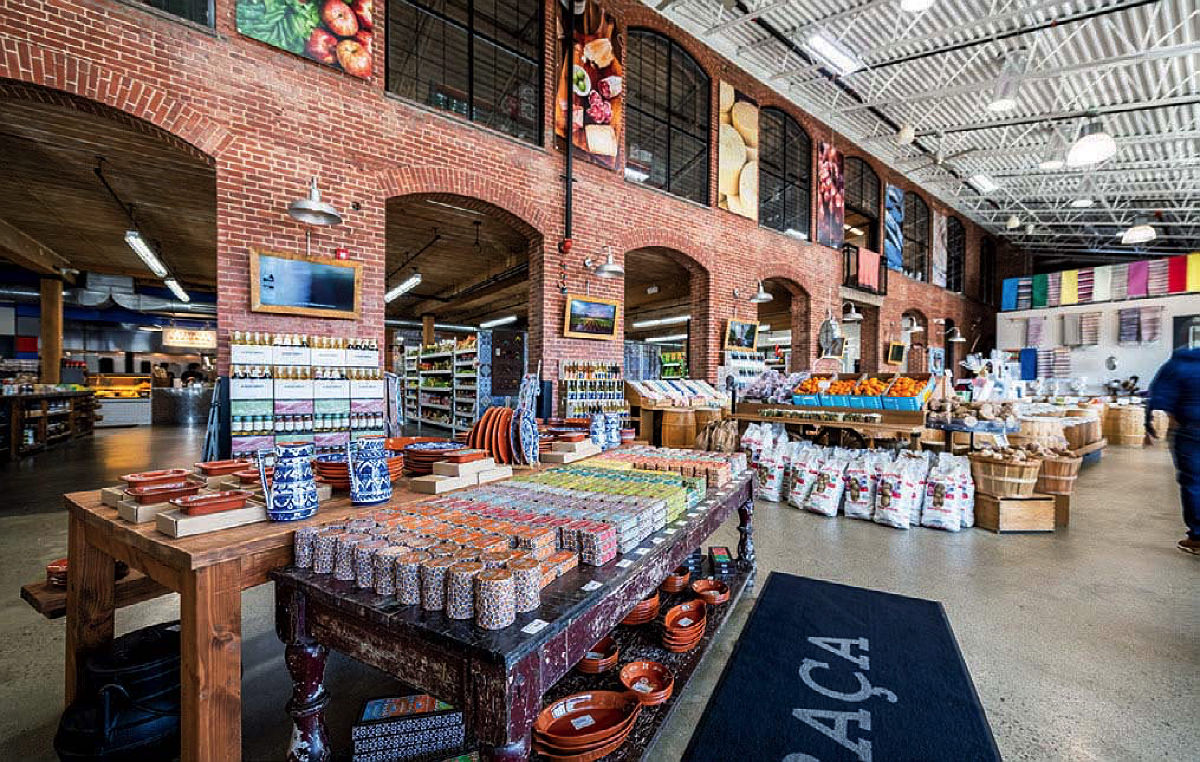
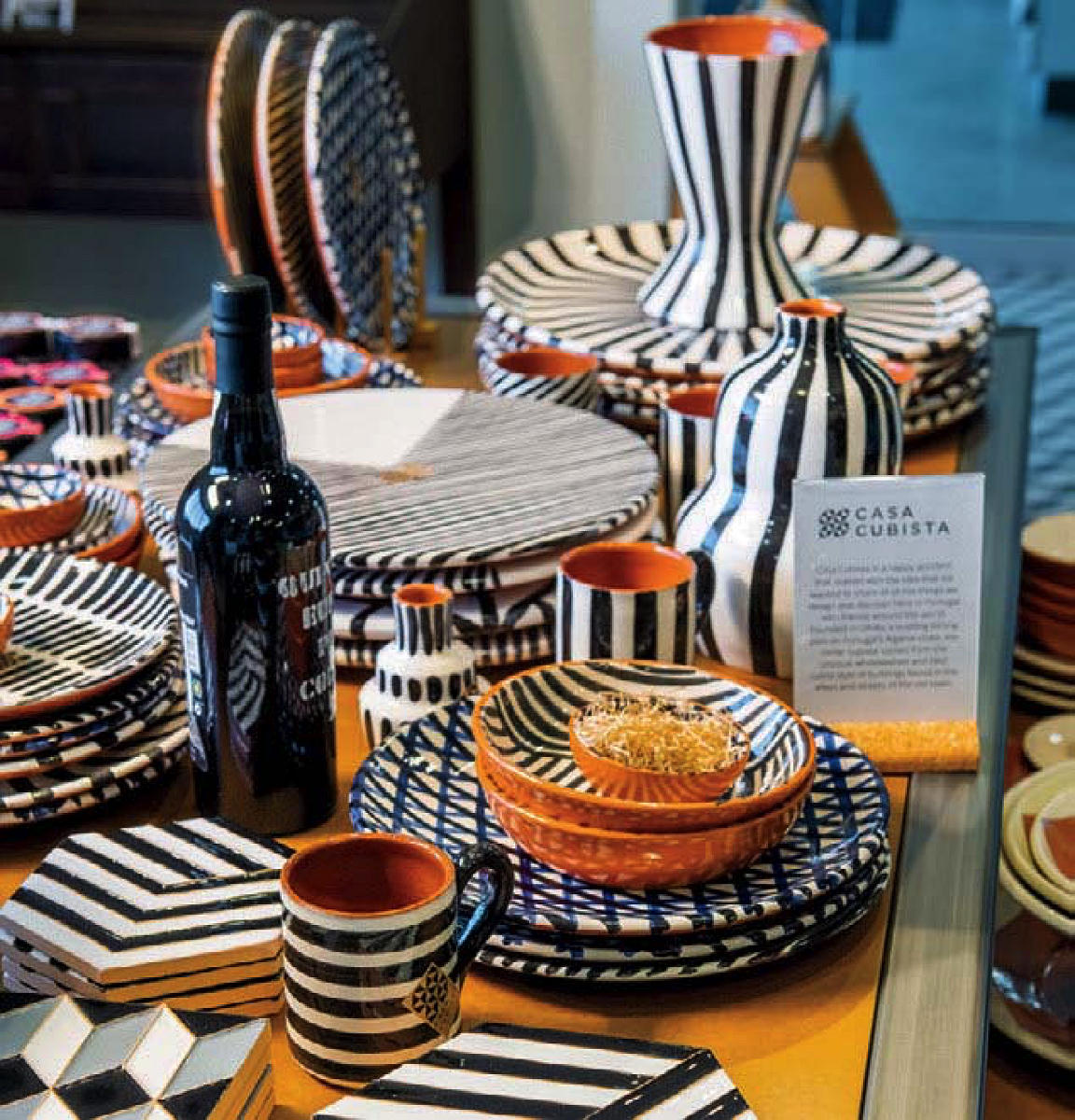
The enticing Portugalia marketplace and its tablewareCourtesy of Portugalia marketplace
The Arts
Benevides has also been integral to the Fabric Arts Festival. In its fifth iteration, the three-day October event offers performances, visual art, talks, and demonstrations that integrate and build on the city’s disparate cultural and ethnic narratives. Meanwhile, Viva Fall River and FRACC are involved with other festivities, like the South Coast Spring Arts Week, May 5-14, featuring exhibits, events, and open studios in Fall River. The popular, especially family-friendly event, We HeART Fall River, celebrates the arts and community with music, food, and activities, on May 13.
Mill buildings around the city have been repurposed for new manufacturers, entrepreneurs, and creators. Shane Landing houses some 72 businesses and artists, FRACC executive director Ashley Occhino says, while the former Metacomet Mill, built in 1847, has become the artists’ collective Smokestack Studios, which includes furniture and cabinet makers, along with jewelers and sculptors (studios open by appointment).
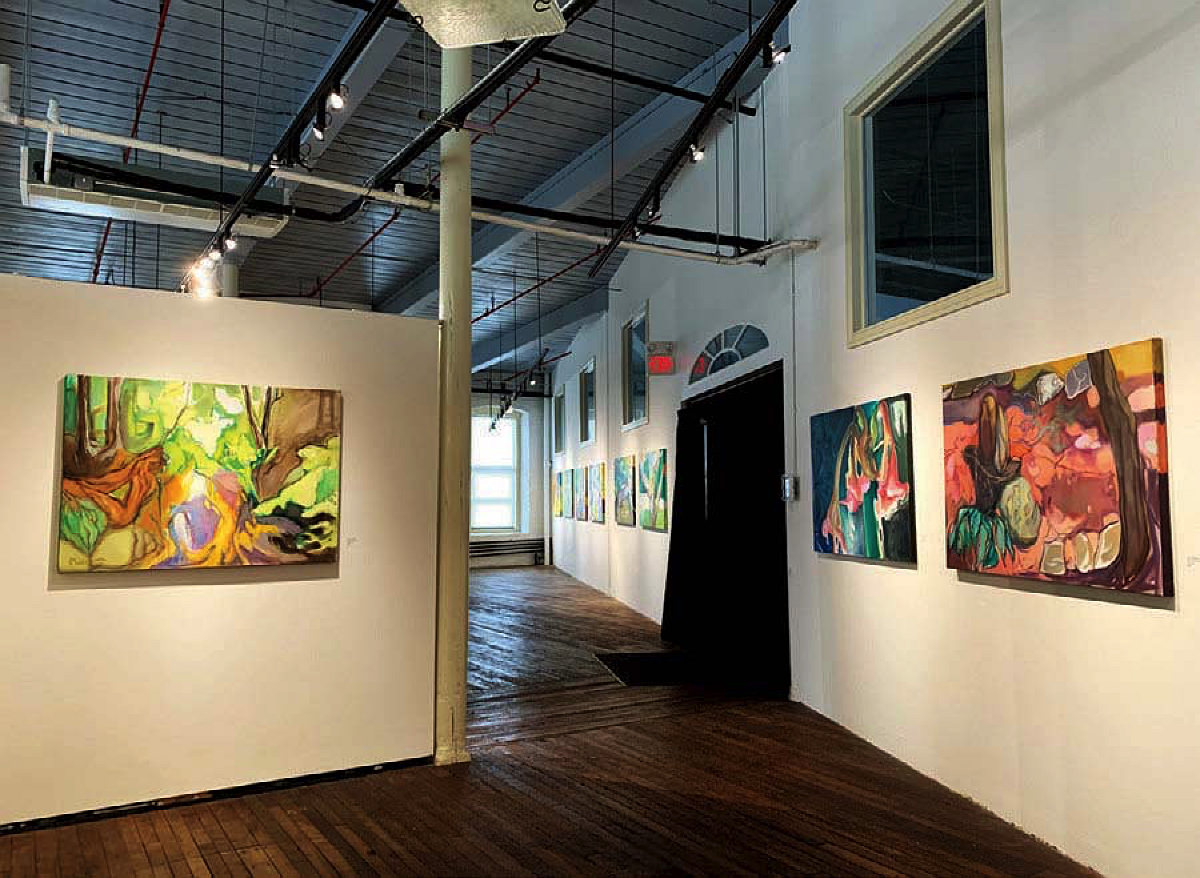
Gallery space in the Narrows Center for the ArtsCourtesy of the Narrows Center for the Arts
There’s no central art museum in Fall River, but the Grimshaw-Gudewicz Art Gallery,on the Bristol Community College campus, mounts free, public, year-round shows, like the 2023 Annual Juried Student Art and Design Exhibition (April 27-May 20). MassDevelopment, the state’s finance agency, helped found Viva Fall River and established a mixed-use downtown corridor, known as a Transformative Development Initiative (TDI) district, where Viva Fall River’s store showcases more than 45 regional products and makers.
“Visual and digital artists, dancers, musicians—there is a rich fabric of people who have amazing talents all across the city, from all different generations and walks of life,” says Occhino, whose FRACC has more than a hundred members, melding bankers and business owners with painters and cabinetmakers. “FRACC is convening everyone together,” she says, “so we are moving forward as a stronger unit.”
Established in 1995 and occupying the former American Printing textile mill on the waterfront, Narrows Center for the Arts has been a pioneering force. It draws top musicians to a performance space with terrific river views. “It’s a good hang on a Friday or Saturday night,” notes Norton, and patrons can bring their own food and drinks (although there’s a café and bakery on site). The Bill Frisell Trio rolls in on June 1, while Jimmie Vaughan and the Tilt-A-Whirl Band perform on June 24. The Narrows also rents art studios and operates galleries. The exhibit “Art Making Women: Fantasies & Realities” (April 13-May 26) features mixed-media contemporary work by eight artists, and “Remedy: Why We Heal” (June 3-July 14) looks at the nurturing effects of art on individuals, communities, and the planet. “We have cool events in a cool space,” Norton says. “The only way we can build the arts and culture scene is to attract people from the outside in.” The arts are a key economic driver, he adds, “but that’s a difficult concept for people in the old school to understand. There have not been a lot of creative thinkers—but that is changing.” A stretch of political stability has helped, although the city is still smarting from the debacle of former mayor Jasiel F. Correia II. He was indicted for fraud and extortion in 2018 and 2019, when he was both ousted and voted back through a special election, and is now in federal prison.
History
Many people, even residents, don’t know that, during the American Revolution, about 120 British soldiers sailed up the Taunton River from Newport, R.I., which they occupied, to attack Fall River, says David Jennings, executive director of the 1750 Lafayette Durfee House museum. “They were going to burn a sawmill at the mouth of the Quequechan River, and 20 guys from Fall River went there, fought them, and chased them away—that story doesn’t get told enough.” That was the 1778 Battle of Freetown, now part of northern Fall River. Colonel Joseph Durfee, who served in the New York state Battles of Brooklyn and White Plains, and in Rhode Island, led the volunteer militia and built the house. In 1811, he opened Durfee’s Globe Manufactory spinning mill, the first textile operation in Fall River; the venture failed, but nevertheless paved the way for future enterprises. The home’s first and second floors have been restored, with an open-hearth kitchen, period furnishings, and hands-on exhibits. “Kids really grasp the past here,” Jennings says. “They can sit on the chairs and feel the powder horn and muskets. And we tell them about outhouses, firewood, and bringing in the water, and not taking baths.” The house re-opens for the season in April; check the website for re-enactments, kids’ activities, and talks such as “Privateers of the Southcoast,” with Wareham historian Mack Phinney (June 4), featuring vintage weaponry and medical equipment.
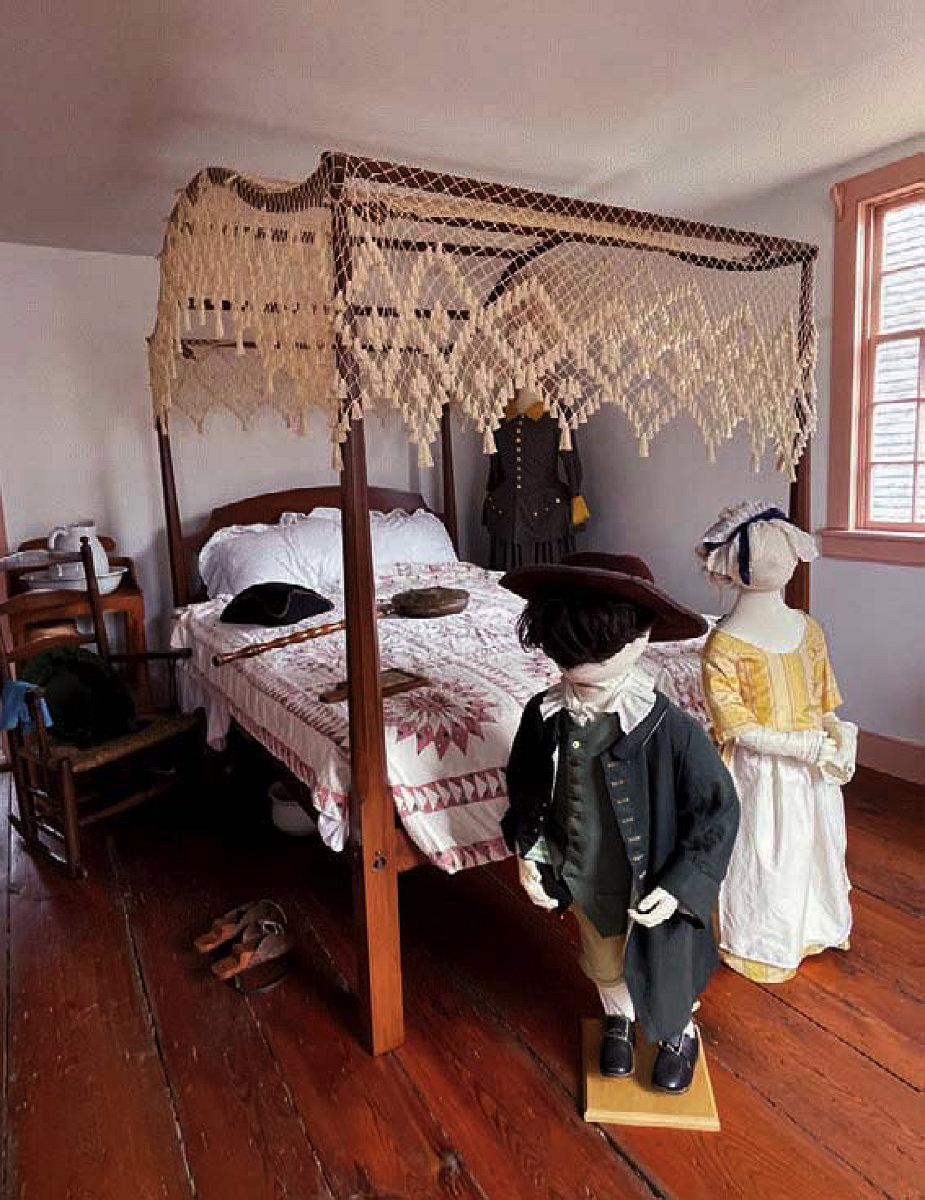
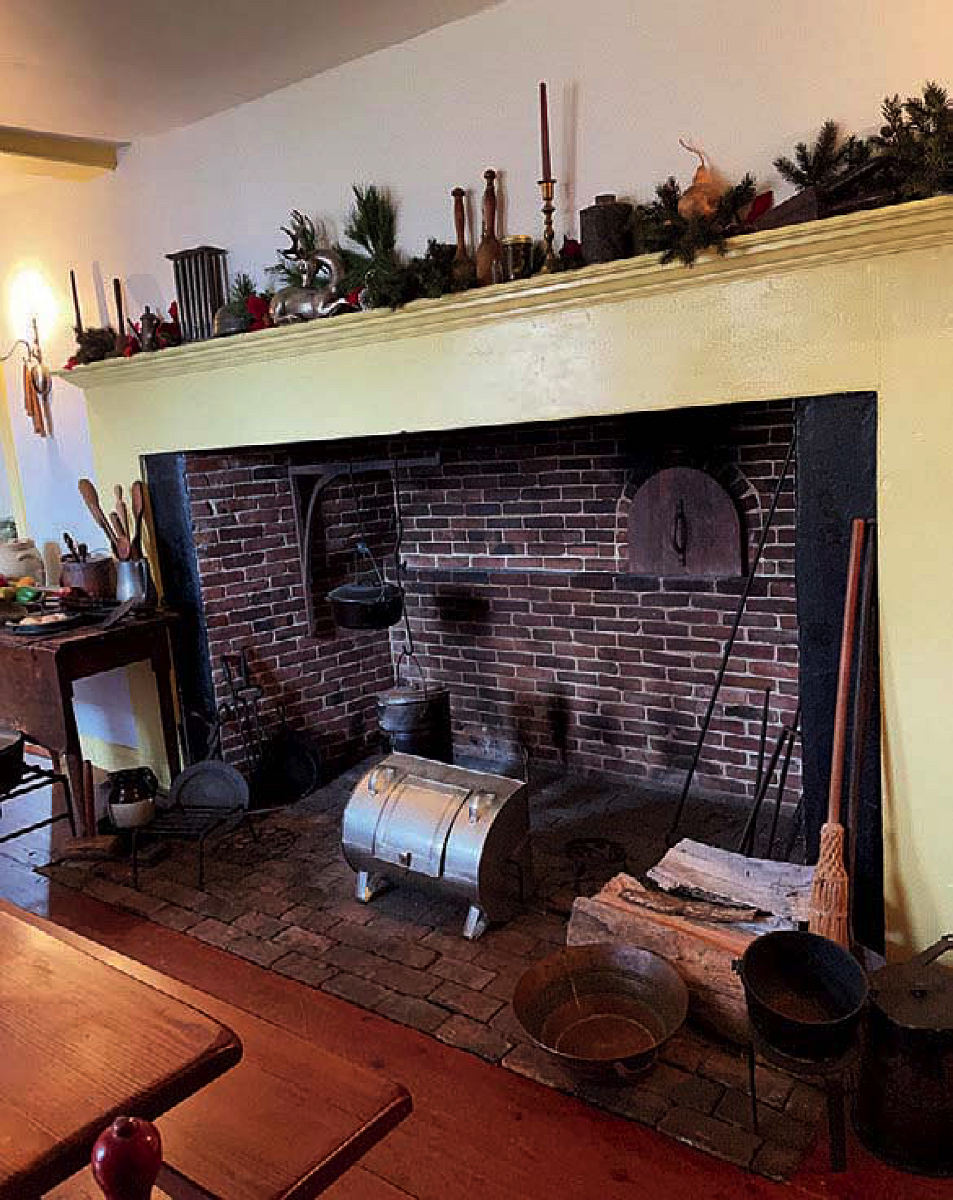
Lafayette Durfee House interior bedroom and hearthPhotographs by Nell Porter Brown/Harvard Magazine
Ultimately, Fall River industrialists would harness eight of the Quequechan River’s waterfalls to run textile operations. Learn more about these illustrious endeavors at the Fall River Historical Society, in the Highlands Historic District. Tours of its 1842 restored granite mansion and headquarters, the Remington/Brayton House, explain the life and times of two wealthy businessmen, Robert Knight Remington and David Anthony Brayton, and Fall River’s varying financial fortunes. Restored to circa 1870, the ornate interior includes 14-foot solid walnut doors, a circular dining room, resplendent living spaces, and family portraits. “The city was at its peak at the turn of the last century, with upwards of a hundred mills in business and a population of 120,000,” says Caroline Aubin, collections registrar and assistant site manager. “World War I was the first nail in the coffin, when huge numbers of the workforce were sent to Europe to fight.” Fall River briefly rebounded from the Great Depression with a boom in garment manufacturing, she says, “but by the end of the 1960s and early 70s, factories were closing and operations moving overseas, and that was the death knell to Fall River.” Tours also explore the home’s role in the Underground Railroad during the 1850s and highlight the society’s unrivaled collection of materials from the Borden family and the infamous murders.
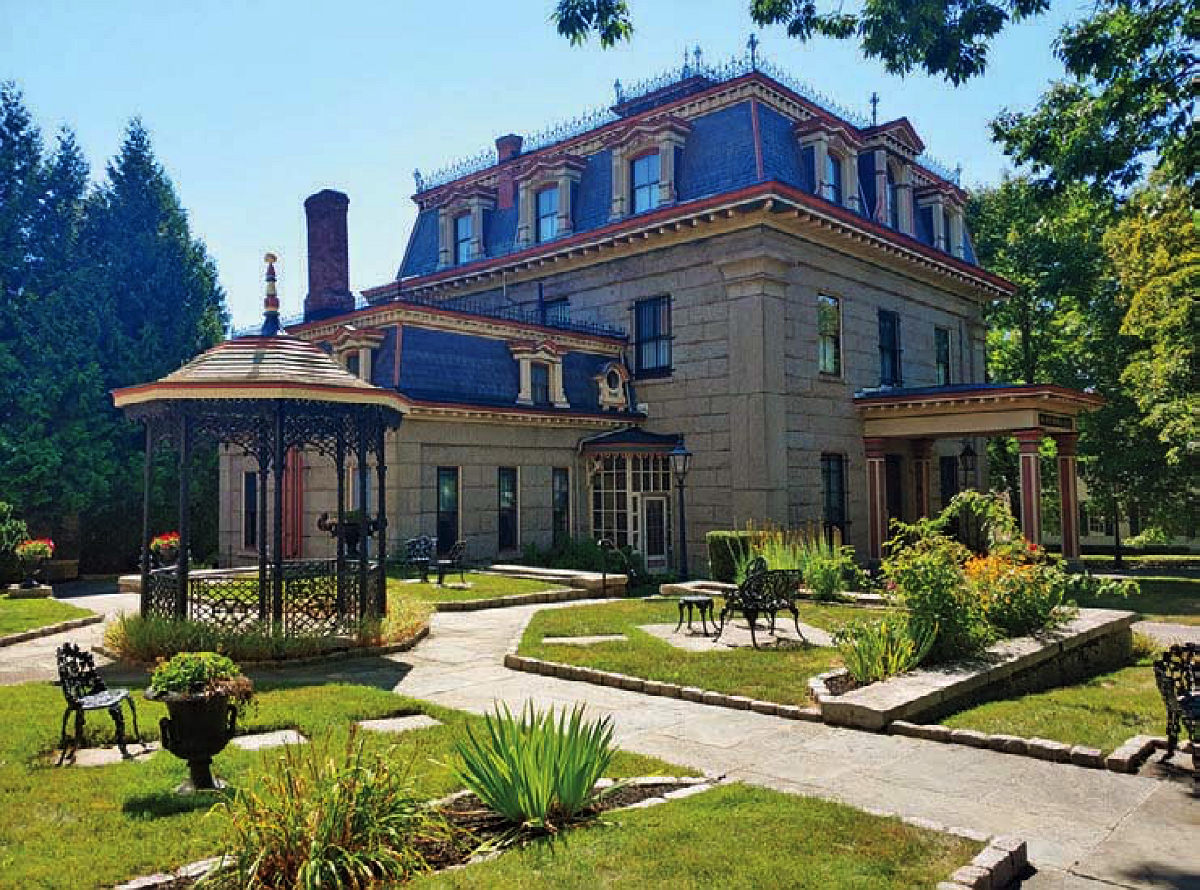
A view of the historical society’s granite Remington/Brayton HousePhotograph courtesy of the Fall River Historical Society
Andrew Borden and his wife Abby were slain at home on a sunny morning in August 1892. His daughter Lizzie Borden was tried for the crime but acquitted. Speculation over the unsolved case, rife with missteps by officials, has never waned, spawning TV shows, scholarly texts, movies, paranormal explorations, and sold-out tours and overnight stays at the former family home, now known as The Historic Lizzie Borden House.
“The prime suspect was a relatively young, well-respected, educated woman,” says Aubin, “and the whole idea of not knowing the true outcome fascinates people. Here, we try to humanize her so you can see all the angles of the story: we tell the facts based on what’s been proven.” The historical society’s library holds a curious collection of crime scene and trial photos. Among them: images of the skulls of the deceased; fruit skin analyzed in pursuit of one theory that the Bordens were poisoned days before the attack; Lizzie’s recipe for meatloaf; and the handle-less hatchet found in the cellar that prosecutors presented as a facsimile of the murder weapon—because the real one was never found.
Despite the frenzied public obsession, the ostracized Lizzie never left Fall River, and after she died in 1927, Aubin, says, was buried in the Oak Grove Cemetery family plot “at the foot of her father.”
The Lizzie Borden phenomenon no doubt brings crowds to Fall River, just as the witch trials have spawned a cottage industry in Salem, Massachusetts. “It is what it is—it’s part of our history, and it is one of the greatest murder mysteries ever,” allows attorney Dave Dennis. But Fall River was once one of the wealthiest cities in America, has a creative hub, performances, maritime and industrial history, restaurants—“and a waterfront with amazing sunset views of Mount Hope Bay,” he adds. “There are a lot more fascinating things here than Lizzie Borden, and we want people to discover that.”
